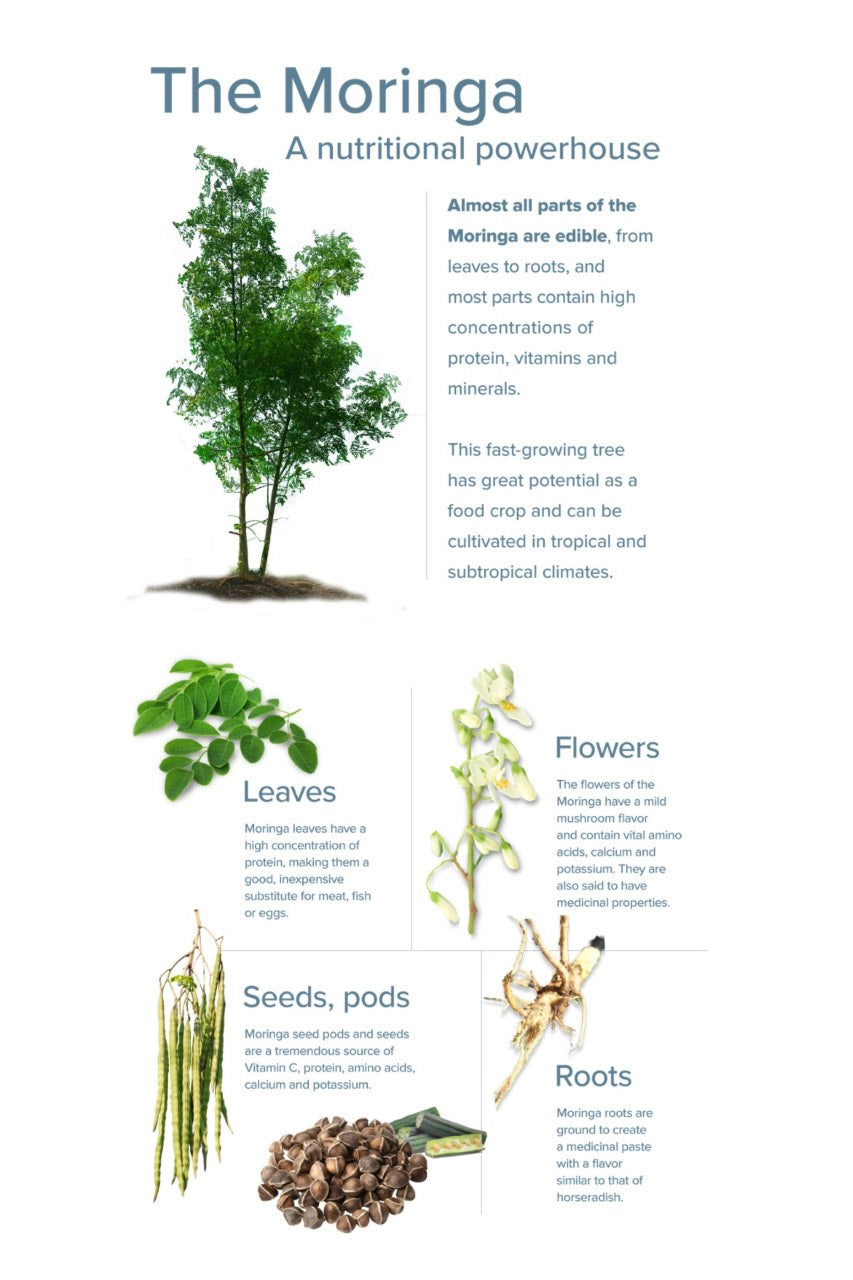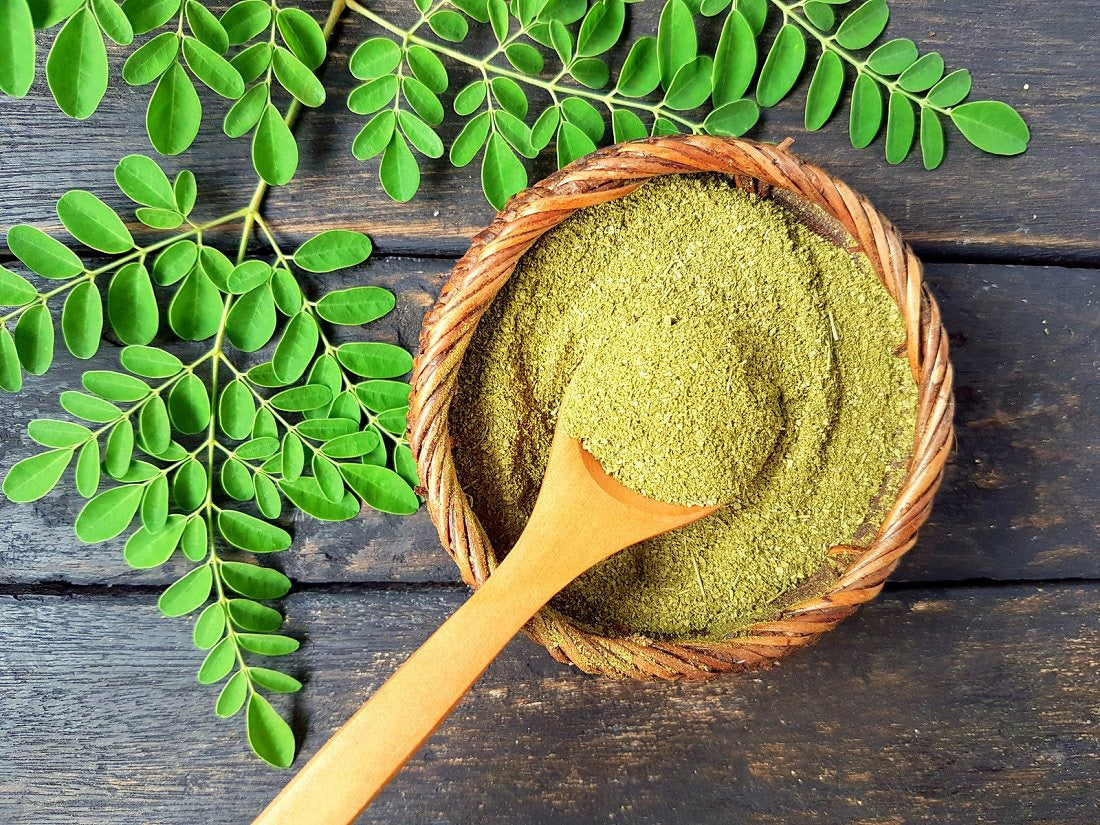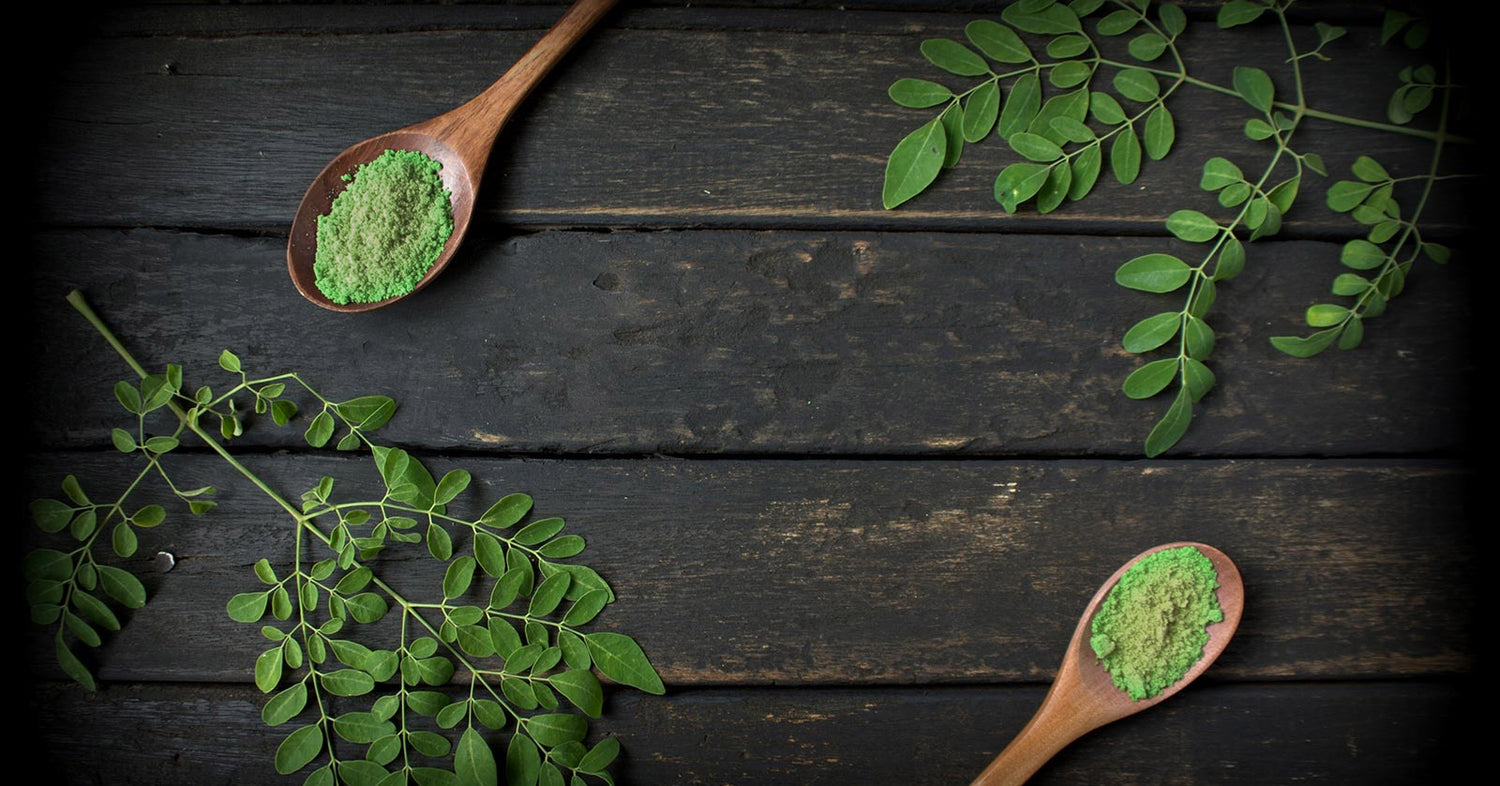
Introduction
Moringa (Moringa oleifera) is a fast-growing, drought-tolerant tree known for its high nutritional content. Native to sub-Himalayan India, it is widely grown in tropical and subtropical regions around the world, and used in nutrition programs in developing countries because of its high levels of protein, vitamins, and minerals. These include protein, iron, calcium, potassium, and Vitamins A, E, and C, as well as antioxidants, anti-inflammatory compounds, and omega-3 and 6 fatty acids.
Contains all essential amino acids along with over 46+ different anti-oxidants.
Moringa leaves, which have a mild spicy herbal flavor like arugula, can be easily incorporated into a wide range of recipes – salads, soups, stir-fries – as a nutritious garnish or seasoning. The dried leaf and dry leaf powder can be added to smoothies, soups, sauces, teas or used as an additive in almost any dish. The bean-like pods of the plant, called drumsticks, are also edible.
Southeast Asian and Filipino farmers in Fresno County along with 7 Generations Producers in the Sutter County, have pioneered small-scale moringa production in California, selling mostly fresh leaves at farmers markets and to grocery stores.

Tiny Leaves. Enormous Benefits.
The leaves of this tree are worthy of special attention. Traditional medicine in several countries has used these leaves to cure a host of diseases. Clinical studies are suggesting that traditional medicine has been on the right track.
Nutritional analyses show that the leaves are very high in protein and contain all of the essential amino acids, including two amino acids that are especially important for children’s diets. This is most uncommon in a plant food.
Moringa leaves are also packed with essential vitamins and minerals—especially vitamins A and C. Delivering such powerful nutrition, these leaves could prevent the scourge of malnutrition and related diseases.

The Need For Moringa
Moringa leaves have been used in the traditional medicine passed down for centuries in many cultures. Now they have also attracted interest in the modern scientific community. In the recent past, more than 750 studies, articles and other publications have included Moringa.
However, most of the studies are either nutritional analyses or laboratory studies with animals. There are very few studies of the effects on human beings. Considering the potentially enormous benefits to humanity, the time has come for medically controlled studies with human subjects that document the bio-availability of nutrients in Moringa leaves and their effectiveness over a long period of time.
As the Moringa tree has spread from the Indian sub-continent throughout the tropical and sub-tropical world, it has adapted itself to local conditions, resulting in many variations. Thus, localized studies are needed to test the leaves’ nutritional content and effects in different areas.





